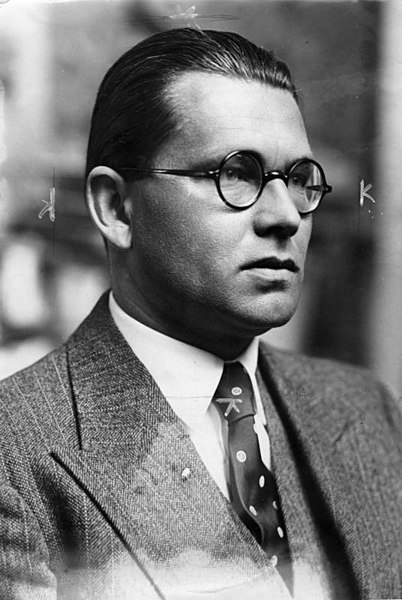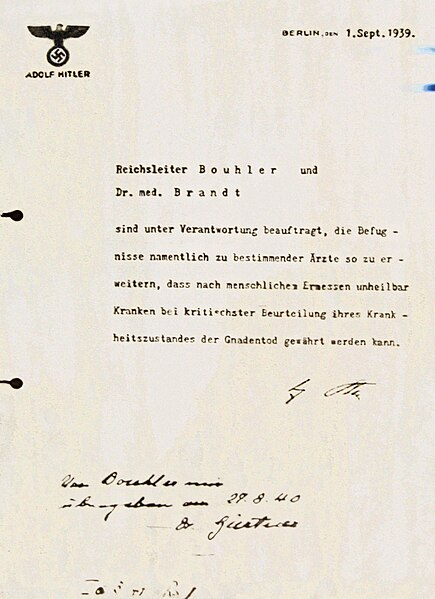Grafeneck Euthanasia Centre
The Grafeneck Euthanasia Centre housed in Grafeneck Castle was one of Nazi Germany's killing centres as part of their forced euthanasia programme. Today, it is a memorial site dedicated to the victims of the state-authorised programme also referred to since as Action T4.
At least 10,500 mentally and physically disabled people, predominantly from Bavaria and Baden-Württemberg, were systematically killed during 1940. It was one of the first places in Nazi Germany where people were killed in large numbers in a gas chamber using carbon monoxide. This was the beginning of the Euthanasia Programme.
Grafeneck was also the central office of the "Charitable Ambulance Transport GmbH" (Gekrat), which was headed by Reinhold Vorberg and responsible for the transport of T4.
Grafeneck Castle
Grafeneck castle with the rococo palace of duke Charles Eugene in front of it, in 1780
Karl Brandt, Hitler's personal physician and organiser of Action T4
Philipp Bouhler, head of the T4 programme
Aktion T4 was a campaign of mass murder by involuntary euthanasia in Nazi Germany. The term was first used in post-war trials against doctors who had been involved in the killings. The name T4 is an abbreviation of Tiergartenstraße 4, a street address of the Chancellery department set up in early 1940, in the Berlin borough of Tiergarten, which recruited and paid personnel associated with Aktion T4. Certain German physicians were authorised to select patients "deemed incurably sick, after most critical medical examination" and then administer to them a "mercy death". In October 1939, Adolf Hitler signed a "euthanasia note", backdated to 1 September 1939, which authorised his physician Karl Brandt and Reichsleiter Philipp Bouhler to begin the killing.
Hitler's order for Aktion T4
NSDAP Reichsleiter Philipp Bouhler, head of the T4 programme
Karl Brandt, Hitler's personal doctor and organiser of Aktion T4
Schönbrunn Psychiatric Hospital, 1934 (Photo by SS photographer Friedrich Franz Bauer)






